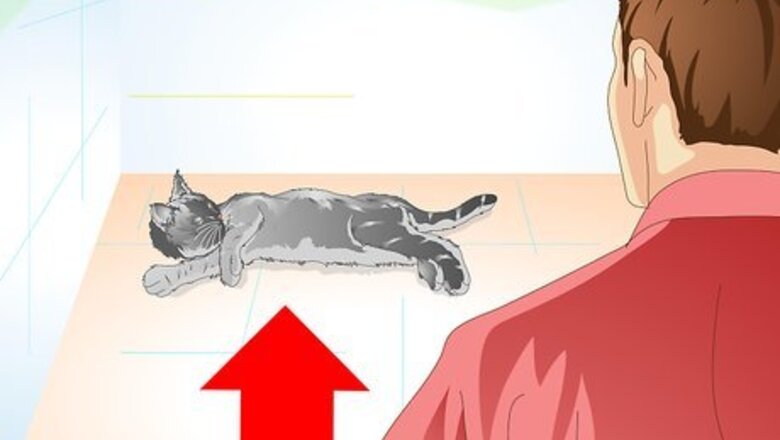
views
Creating a Safe Recovery Space
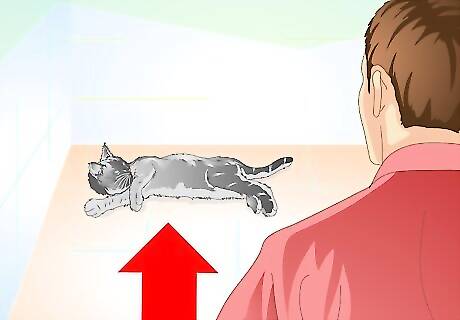
Provide a quiet, comfortable space for your cat. Your cat will probably feel nauseous and out of sorts for the first 18-24 hours after anesthesia. It may also be more likely to snap at people and other animals, so providing a quiet, isolated space where your cat can rest is very important. Make sure that you can still see your cat from its resting place. Block off any dangerous hiding spots or spots that you can’t easily access. Keep children and other pets away from the cat. Your cat needs to rest and recover, and this is harder to do if it’s constantly interrupted or bothered by others. Keep in mind that spaying is a more invasive procedure than neutering, and it may have a longer recovery time.

Keep your cat comfortable. Make sure your cat has a comfortable place to sleep. If your cat doesn’t have a regular bed, try lining a box with a soft pillow or blanket. If you can, put your cat's bed in an area with tile or wood floors. Cats enjoy cooling off their abdomens by stretching out on cool, solid floors, and this may help soothe the surgical site. If possible try to keep the bed low, and prevent them from having to jump a whole lot.

Keep the lights low. Cats who have had anesthesia are usually sensitive to light. Dim the lights in your cat’s resting area, or turn them off. If this isn’t an option, provide something like a domed bed that offers some escape from the light.
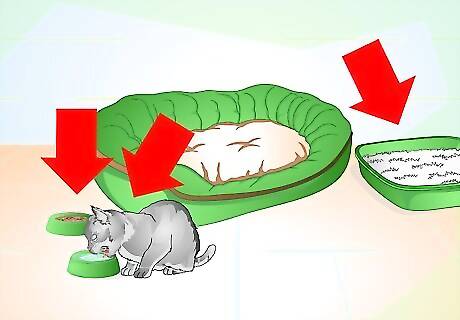
Provide a clean litter box and easily accessible food and water. In order to heal after surgery, cats should not jump, climb stairs, or exert themselves to reach necessities. Don’t use regular cat litter for at least a week following surgery. It can get into the surgical incisions and cause an infection, especially in male cats. Use shredded paper or newspaper, “Yesterday’s News” litter (made with shredded paper), or uncooked long-grain rice in the litter box instead.
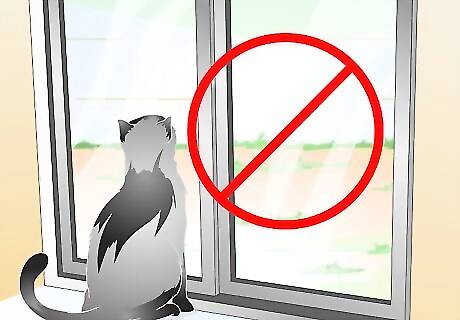
Keep the cat indoors. Do not allow your cat outdoors for at least two weeks after surgery. This will help the surgical site stay clean, dry, and free of infection.
Treating Your Cat After Surgery
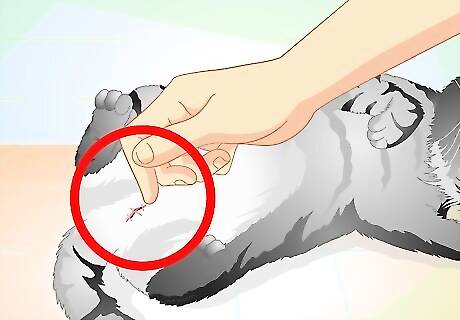
Inspect your cat’s incision area. Looking at your cat’s incision can help you get an idea of what it looks like and will help you monitor its progress. If possible, ask your veterinarian to show you the incision before you take your cat home. You may want to take a photograph of the site on the first day for a reference point. Female cats and male cats with undescended testicles will have incisions on their bellies. Most male cats will have two small incisions on the scrotum area (under the tail).
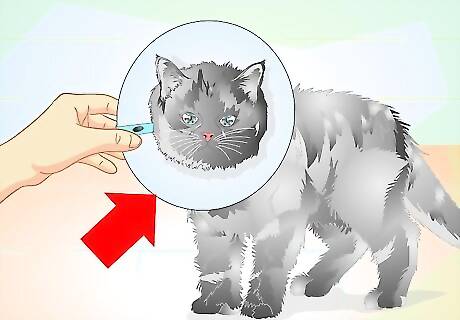
Use an “Elizabethan” collar. Your veterinarian may provide this collar, or you can purchase one at your local pet store. This type of collar extends up past your cat’s face so that it can’t bother the incision area. These collars may also be called “protective” collars, “E-collars,” or “cone” collars. Your cat may or may not need this depending on the behavior. Try going with/without it but make sure to watch your cat. If they start to excessively dig at the wound put it on. Make sure they aren't licking the incision site either, as this can lead to infection.
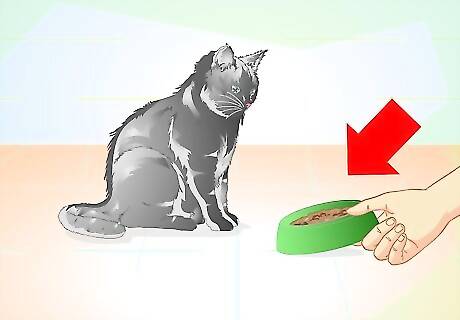
Offer the cat food and water. You can offer your cat a little bit of water in a shallow dish (or an ice cube) as soon as you get home from the vet. Your vet will probably give you feeding instructions, and you should follow those. If you did not receive instructions, consider the following: If your cat seems alert and responsive, you can offer your cat about a quarter of its normal portion of food about 2-4 hours after you get home from surgery. Don’t force the cat to eat or drink, though. If your cat is able to eat, give it another small meal in 3-6 hours. Repeat this until the cat has eaten a full portion of food, and then resume the cat’s normal feeding schedule. If your cat is younger than 16 weeks old, feed your cat a small meal (about half the normal amount) as soon as you get it home and settled after surgery. If your kitten will not eat after returning home, you can try putting a small amount of maple or corn syrup on a cotton ball or q-tip and rubbing it on your cat’s gums. Don’t give your cat any “special” foods, treats, or junk food after surgery. Your cat’s stomach may feel upset, so keep your cat’s diet as regular as possible. Don’t give your cat milk; cats can’t digest it.
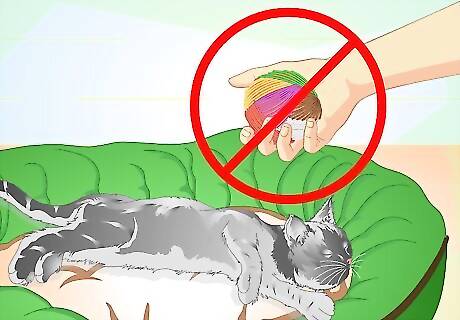
Let your cat rest. Don’t try to pet or play with your cat immediately after surgery. While this may feel reassuring to you, it may just keep your cat from feeling safe and rested.
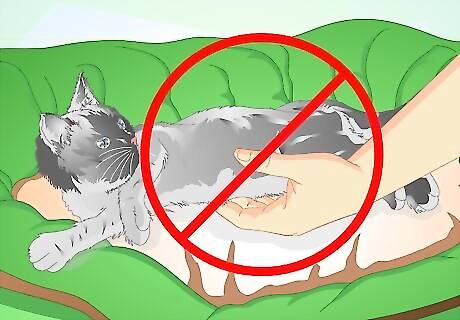
Avoid lifting your cat unless it’s absolutely necessary. You can easily tear your cat’s surgical incision if you lift or move your cat too much. For male cats, avoid putting pressure on the scrotum (under the tail). For female cats (and male cats that had surgery for undescended testicles), avoid putting pressure on the abdomen. If you have to lift your cat, try this approach: Cup your cat’s hind end with one hand and use the other hand to support your cat’s chest just under the front legs. Lift the cat’s body gently.

Restrict your cat’s movement. For the next week after surgery, make sure your cat doesn’t jump around, play, or move too much. This can irritate or cause infection at the surgical site. Remove cat trees, perches, and other furniture that your cat may enjoy jumping on. Keep your cat in a small room, such as the laundry room or bathroom, or in a kennel or crate when you are not able to supervise it. Consider carrying your cat up and down any stairs. The cat is unlikely to harm the incision or operation site by going up and downstairs, but this is a sensible precaution. Understand that cats who are in distress -- such as those who’ve just had surgery -- may try to escape. Be very vigilant in supervising your cat, especially for the first 24-48 hours after surgery.

Avoid bathing the cat. Don’t bathe your cat for 10-14 days after surgery. This can cause irritation or infection at the surgical site. If necessary, clean around the surgical incision with a slightly damp cloth (no soap), but don’t get the actual incision area wet. Do not scrub the surgical area.
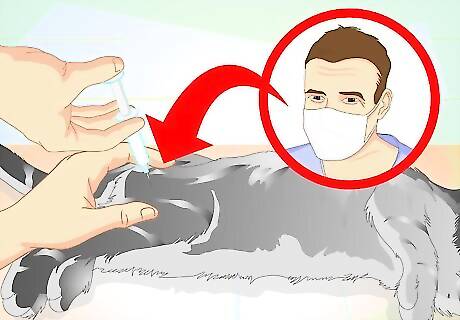
Give pain medications only as directed by your veterinarian. Your vet may send you home with prescription medications for your cat. If so, make sure to give this medication as directed, even if you don’t observe that your cat is in pain. Cats are very good at hiding pain and may be suffering even if they don’t show it. Never give your cat any medication that has not been specifically prescribed by its veterinarian. Human medication, and even medications meant for other animals such as dogs, can kill cats! Do not give your cat any medicines, even over-the-counter medicines, that your vet has not verified as being appropriate for your cat. Even medications such as Tylenol can be fatal to cats. Don’t apply any products to the surgical site, including antibiotics or disinfecting creams, unless your veterinarian has approved them for your cat.
Monitoring Your Cat
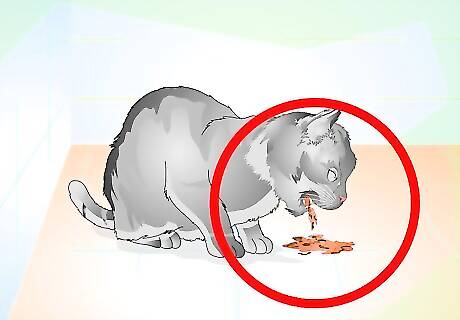
Watch for vomiting. If your cat vomits after eating the night you bring it home from surgery, remove the food. Try feeding a small amount of food again the next morning. If your cat vomits again, or if it has diarrhea, call your vet.
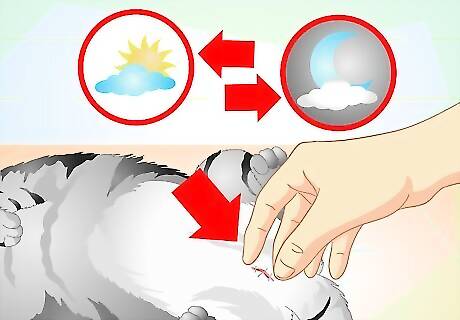
Check the incision site each morning and night. For 7-10 days after surgery, check your cat’s incision site every morning and night. Compare its appearance to the incision site on the first day after surgery to judge how your cat is healing. Call your veterinarian if you observe any of the following: Redness. The incision may initially be pink or light red around the edges. This redness should fade with time. If it intensifies or the incision appears dark red at any time, this could be a sign of a developing infection. Bruising. Some slight bruising that goes from red to purple as it heals is normal. If the bruising spreads, gets, worse or is severe, or if new bruising occurs, however, you should seek follow-up care right away. Swelling. Some swelling around the incision site is a normal part of healing, but if the swelling persists or worsens, you should call your veterinarian. Discharge. You may see a very small amount of light red discharge around the incision when you bring your cat home. This can be normal, but if the discharge persists for more than a day, the amount of discharge increases, the discharge is bloody or the discharge is green, yellow, white or foul smelling, your cat needs veterinary attention. Separation of the wound edges. In a male cat, the scrotal incisions will be open, but they should be small, and they should close rapidly. A female cat or a male that had abdominal surgery may or may not have visible stitches. If the cat has visible stitches, these should remain intact. If the cat does not have visible stitches, the wound edges should remain closed. If they start to separate or you notice anything, including suture material, protruding from the wound, take the cat to your veterinarian right away.

Check your cat’s gums. Your cat’s gums should be pale pink to red in color. When you press lightly on the gum and then let go, the color should return quickly to the area. If your cat’s gums are pale or don’t return to their normal color when pressed, call your vet.

Look for signs of pain. Cats don’t always display pain the way humans (or even dogs) do. Be on the lookout for signs of discomfort in your cat. If you see any signs of pain, your cat needs help and you should call your vet. Common signs of postoperative pain in cats include: Persistent hiding or attempts to escape Depression or lethargy Loss of appetite Hunched posture Tense abdominal muscles Growling Hissing Anxiety or skittishness
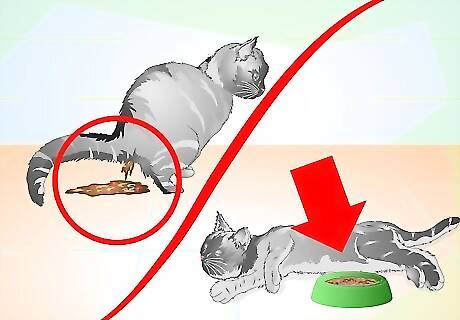
Watch for other warning signs. Make sure that your cat is recovering by keeping an eye on its behavior. Anything that doesn’t seem “normal” should go away within 24 hours of surgery. If you notice unusual behavior or symptoms in your cat, call your vet immediately. The following are signs to watch for: Lethargy for more than 24 hours after surgery Diarrhea Vomiting after the first night Fever or chills Decreased appetite for more than 24-48 hours after surgery Failure to eat anything after 24 hours (for adult cats) or 12 hours (for kittens) Difficult or painful urination Not defecating for more than 24-48 hours after surgery
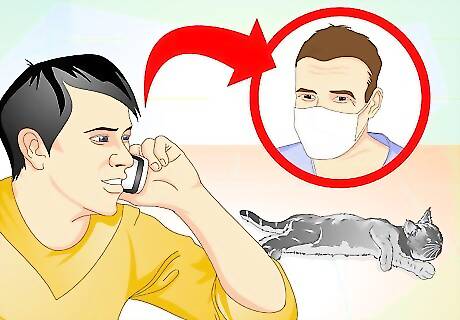
Contact an emergency vet. In most cases, contacting your normal veterinarian when you’re concerned will be enough to help your cat recover. However, in certain cases, you should seek emergency care for your cat. Call an emergency vet or animal hospital if you observe any of the following in your cat: Unconsciousness Unresponsiveness Difficulty breathing Signs of extreme pain Altered mental state (the cat does not seem to recognize you or its surroundings, or is behaving very unusually) Distended abdomen Bleeding
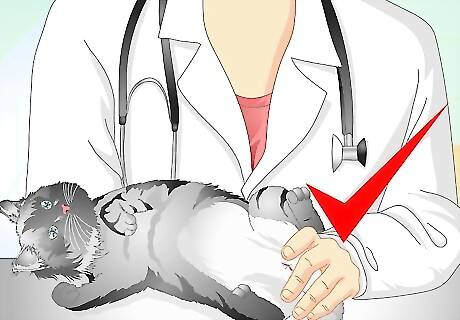
Keep any follow-up appointments. Your cat may not have skin sutures (visible stitches). However, if your cat does have sutures, your vet will need to remove them in 10-14 days after surgery. Even if your cat doesn’t have sutures, keep any follow-up appointments that your veterinarian recommended.



















Comments
0 comment